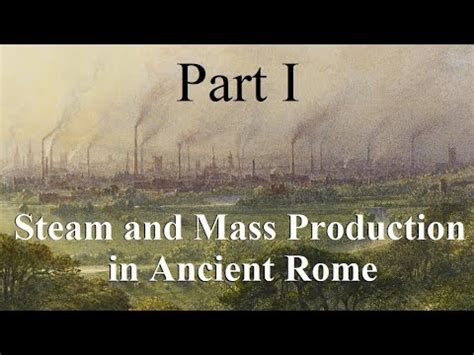The Roman Empire was a marvel of its time, with an extensive network of roads, aqueducts, and architectural wonders that continue to inspire us today. Yet, one cannot help but wonder why the Romans, with all their ingenuity and resources, did not experience an industrial revolution. This is an intriguing question, one that opens up a Pandora’s box of factors including economics, societal norms, and technological capabilities. The absence of a real census could be one of those overlooked nuances that affected more than just governance; it could have throttled their logistical and industrial progress, as suggested by some discussions on the topic.
Firstly, the very concept of labor in the Roman Empire was fundamentally different from what we understand today. Slavery was an essential part of Roman society, and the availability of cheap labor could have played a significant role in stunting technological advancement. Why innovate when human labor was readily and inexpensively available? In the antebellum South of the United States, which lagged behind the North in adopting new technologies, we see a similar pattern. This is not to say that industrial and technological advancements can’t happen in a slave-holding society, but the impetus for automation diminishes significantly when manual labor is plentiful and inexpensive.
Technological limitations also hindered the Romans. Advanced metallurgy is a prerequisite for complex machinery such as steam engines or spinning jennies. While the Romans excelled in construction and rudimentary metallurgy—producing high-quality swords and other implements—they lacked the advanced techniques necessary for creating durable and efficient machines that could handle high-pressure steam. Moreover, their engineering marvels like the Pantheon or aqueducts, though impressive, did not require the same materials or technical precision that industrial machinery would need.
Interestingly, the Romans had some elements of engineering and technology that could have paved the way for mechanical innovation. The existence of the Antikythera mechanism shows they had complex gear trains and precision manufacturing. However, these advancements were isolated and did not lead to a broader industrial application. In part, this might be due to the lack of an economically viable use case. For example, while water-lifting devices like the screw pump were known, there was no pressing need to develop more efficient systems when simpler methods sufficed. The Romans didn’t have coal mines that needed de-watering, a key driver behind the invention of the steam engine in later centuries.
Another aspect to consider is the dissemination of knowledge. The absence of a printing press and cheap paper stifled the spread of technological ideas. Mass literacy and the ability to easily reproduce and share information were crucial in the later European Industrial Revolution. Without these tools, even the most ingenious Roman inventor would struggle to propagate his ideas widely. This underscores a broader theme: technology and its development are rarely about isolated inventions. They require a confluence of economic needs, available resources, and societal conditions to blossom fully.
Finally, the geopolitical and economic context of the Roman Empire didn’t favor industrialization. Frequent plagues lowered populations, reducing the potential workforce that could have driven both agricultural and industrial innovation. Moreover, Rome’s expansive territory meant there was often no pressing need to build upwards in urban areas; they could expand outwards. Contrast this with Carthage, where space constraints led to multi-story buildings and more sophisticated plumbing technologies. The Romans had the luxury of land and labor, two factors that paradoxically hindered their need to industrialize.
In summation, the Roman Empire did not experience an industrial revolution not because of a lack of ingenuity or resources, but due to a complex interplay of societal, economic, and technological factors. From the reliance on slave labor to advanced metallurgy skills that were not quite sufficient, various barriers existed that prevented the rise of an industrial society. These elements combine to offer a fascinating case study in how different conditions can significantly alter the course of technological and societal development.


Leave a Reply